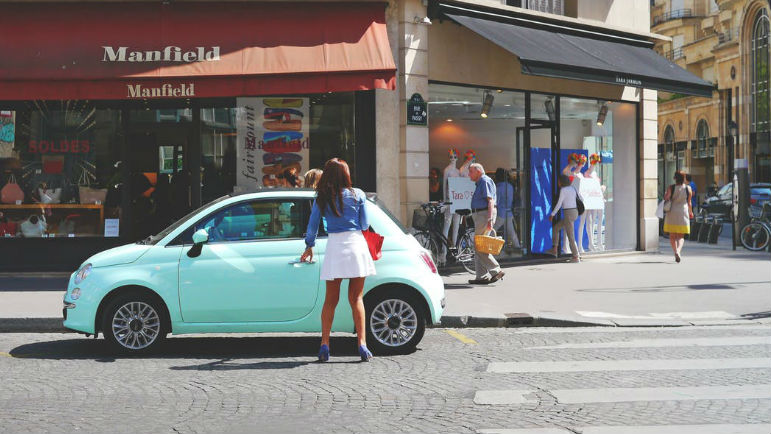INTRO: Thousands of individuals in Florida have had their licenses suspended for being unable to pay fines tied to pedestrian tickets.
FACTS: Thousands of individuals in Florida have had their licenses suspended for being unable to pay fines tied to pedestrian tickets. However, the tickets have been not only issued for jaywalking, but for over two dozen obscure pedestrian statutes. More often than not, these obscure statutes are enforced against black citizens at a higher rate than any other population. City Council has asked the Sheriff, Mike Williams, to review the department’s policies and requested officers cease issuing pedestrian tickets, the ABA has noted that that seems unlikely.
ISSUES:
P: Why are licenses being suspended for pedestrian acts not involving a car?
D: Ceasing to issue pedestrian tickets would cause the clerks of the court to miss out on around $40 million a year.
LAW:
316.130 Pedestrians; traffic regulations.—
(1) A pedestrian shall obey the instructions of any official traffic control device specifically applicable to the pedestrian unless otherwise directed by a police officer.
(2) Pedestrians shall be subject to traffic control signals at intersections as provided in s. 316.075, but at all other places pedestrians shall be accorded the privileges and be subject to the restrictions stated in this chapter.
(3) Where sidewalks are provided, no pedestrian shall, unless required by other circumstances, walk along and upon the portion of a roadway paved for vehicular traffic.
(4) Where sidewalks are not provided, any pedestrian walking along and upon a highway shall, when practicable, walk only on the shoulder on the left side of the roadway in relation to the pedestrian’s direction of travel, facing traffic which may approach from the opposite direction.
(5) No person shall stand in the portion of a roadway paved for vehicular traffic for the purpose of soliciting a ride, employment, or business from the occupant of any vehicle.
(6) No person shall stand on or in proximity to a street or highway for the purpose of soliciting the watching or guarding of any vehicle while parked or about to be parked on a street or highway.
(7)(a) The driver of a vehicle at an intersection that has a traffic control signal in place shall stop before entering the crosswalk and remain stopped to allow a pedestrian, with a permitted signal, to cross a roadway when the pedestrian is in the crosswalk or steps into the crosswalk and is upon the half of the roadway upon which the vehicle is traveling or when the pedestrian is approaching so closely from the opposite half of the roadway as to be in danger.
(b) The driver of a vehicle at any crosswalk where signage so indicates shall stop and remain stopped to allow a pedestrian to cross a roadway when the pedestrian is in the crosswalk or steps into the crosswalk and is upon the half of the roadway upon which the vehicle is traveling or when the pedestrian is approaching so closely from the opposite half of the roadway as to be in danger.
(c) When traffic control signals are not in place or in operation and there is no signage indicating otherwise, the driver of a vehicle shall yield the right-of-way, slowing down or stopping if need be to so yield, to a pedestrian crossing the roadway within a crosswalk when the pedestrian is upon the half of the roadway upon which the vehicle is traveling or when the pedestrian is approaching so closely from the opposite half of the roadway as to be in danger. Any pedestrian crossing a roadway at a point where a pedestrian tunnel or overhead pedestrian crossing has been provided shall yield the right-of-way to all vehicles upon the roadway.
(8) No pedestrian shall suddenly leave a curb or other place of safety and walk or run into the path of a vehicle which is so close that it is impossible for the driver to yield.
(9) Whenever any vehicle is stopped at a marked crosswalk or at any unmarked crosswalk at an intersection to permit a pedestrian to cross the roadway, the driver of any other vehicle approaching from the rear shall not overtake and pass such stopped vehicle.
(10) Every pedestrian crossing a roadway at any point other than within a marked crosswalk or within an unmarked crosswalk at an intersection shall yield the right-of-way to all vehicles upon the roadway.
(11) Between adjacent intersections at which traffic control signals are in operation, pedestrians shall not cross at any place except in a marked crosswalk.
(12) No pedestrian shall, except in a marked crosswalk, cross a roadway at any other place than by a route at right angles to the curb or by the shortest route to the opposite curb.
(13) Pedestrians shall move, whenever practicable, upon the right half of crosswalks.
(14) No pedestrian shall cross a roadway intersection diagonally unless authorized by official traffic control devices, and, when authorized to cross diagonally, pedestrians shall cross only in accordance with the official traffic control devices pertaining to such crossing movements.
(15) Notwithstanding other provisions of this chapter, every driver of a vehicle shall exercise due care to avoid colliding with any pedestrian or any person propelling a human-powered vehicle and give warning when necessary and exercise proper precaution upon observing any child or any obviously confused or incapacitated person.
(16) No pedestrian shall enter or remain upon any bridge or approach thereto beyond the bridge signal, gate, or barrier after a bridge operation signal indication has been given. No pedestrian shall pass through, around, over, or under any crossing gate or barrier at a railroad grade crossing or bridge while such gate or barrier is closed or is being opened or closed.
(17) No pedestrian may jump or dive from a publicly owned bridge. Nothing in this provision requires the state or any political subdivision of the state to post signs notifying the public of this provision. The failure to post a sign may not be construed by any court to create liability on the part of the state or any of its political subdivisions for injuries sustained as a result of jumping or diving from a bridge in violation of this subsection.
(18) No pedestrian shall walk upon a limited access facility or a ramp connecting a limited access facility to any other street or highway; however, this subsection does not apply to maintenance personnel of any governmental subdivision.
(19) A violation of this section is a noncriminal traffic infraction, punishable pursuant to chapter 318 as either a pedestrian violation or, if the infraction resulted from the operation of a vehicle, as a moving violation. http://www.leg.state.fl.us/statutes/index.cfm?App_mode=Display_Statute&URL=0300-0399/0316/Sections/0316.130.html
The state senator’s bill, which he plans to submit for the third time, would allow for those who demonstrate financial hardship to perform community service if they are unable to pay civil fines. He said the bill has never made it to a full vote by the legislature.
DETAILED FACTS:
More than half the 2,000 people who received pedestrian tickets in Duval County, Florida, from 2012 to 2016 saw their driver’s licenses suspended or their ability to obtain one limited, according to an analysis by the Florida Times-Union and ProPublica.The tickets, which carry what can seem like a modest $65 fine, can have more significant consequences for those who get them and refuse to pay or are unable to do so.Over five years, a total of 2,004 pedestrian tickets were issued in Duval County, which is comprised almost entirely by the city of Jacksonville. Of those tickets, 982 people who failed or were unable to pay the fine lost their driver’s licenses or their ability to obtain one, according to the analysis. Some believe the ticketing may be racially driven given the following statistics:
- 2,004 pedestrian tickets were issued in Duval County, 55 percent to black citizens;
- 982 people lost their driver’s licenses or their ability to obtain one due to unpaid fines, 54 percent of those were black; and
- Black citizens only make up 29 percent of Duval County.
As of Tuesday’s City Council meeting, three elected officials on the body have called on Sheriff Mike Williams to order his officers to stop writing pedestrian tickets. Council member Garrett Dennis asked the Office of General Counsel to review what authority the council had to compel him to do so. In addition to voicing her support for that measure, council member Katrina Brown asked for a noticed meeting focused on pedestrian infrastructure and enforcement.The Jacksonville Sheriff’s Office has insisted that blacks have not been targeted in the issuance of pedestrian tickets, and said it saw no reason to review the investigation’s findings of a disproportionate impact on African Americans. The office said those receiving tickets could contest them before a judge, and that it would address any erroneous or improper ticketing with additional training of officers. The ABA has noted the following: 132 of the tickets, issued for crossing outside of a crosswalk, led to license suspensions, but didn’t conform with state law and should never have been issued, according to the analysis. The infraction applies only when people cross in between intersections with traffic lights, but was routinely cited without regard for traffic light placement.
OTHER FACTS:
- In 2017, in Florida, 8,732 crashes were caused by pedestrians https://firesportal.com/Pages/Public/QuickStats.aspx
- In Texas, it is illegal for a drunken carnival worker to assemble the Tilt-A-Whirl and could keep that worker off the roads for up to a year. https://billhaddoxinsuranceblog.wordpress.com/2012/08/29/28-ways-to-lose-your-drivers-license/
- Failing to pay child support became the first nondriving offense linked to a driver’s license in 1975, when Congress established a program to ensure that noncustodial parents financially support their children. It’s the one penalty that the AAMVA says actually works, increasing child support payments in some states. https://billhaddoxinsuranceblog.wordpress.com/2012/08/29/28-ways-to-lose-your-drivers-license/
- Prostitutes and their customers can lose their driver’s licenses in California and Florida. https://billhaddoxinsuranceblog.wordpress.com/2012/08/29/28-ways-to-lose-your-drivers-license/
- In Iowa and Montana, suspensions are given out to students who have failed to pay back their college loans. https://billhaddoxinsuranceblog.wordpress.com/2012/08/29/28-ways-to-lose-your-drivers-license/
- For vandalism or graffiti, Texas and Florida suspend the licenses of vandals for one year, while California suspends for two years. If a convicted vandal is too young to have a driver’s license, California will delay the issuance of a license for up to three years from the date he or she is eligible to drive.
ARTICLE LINKS:
- http://blogs.findlaw.com/blotter/2017/12/can-i-lose-my-license-for-jaywalking.html (original article)
- http://www.abajournal.com/news/article/pedestrian_tickets_lead_to_hundreds_of_suspended_drivers_licenses (Article)
MEDIA
(Florida officer threatens man for jaywalking)




